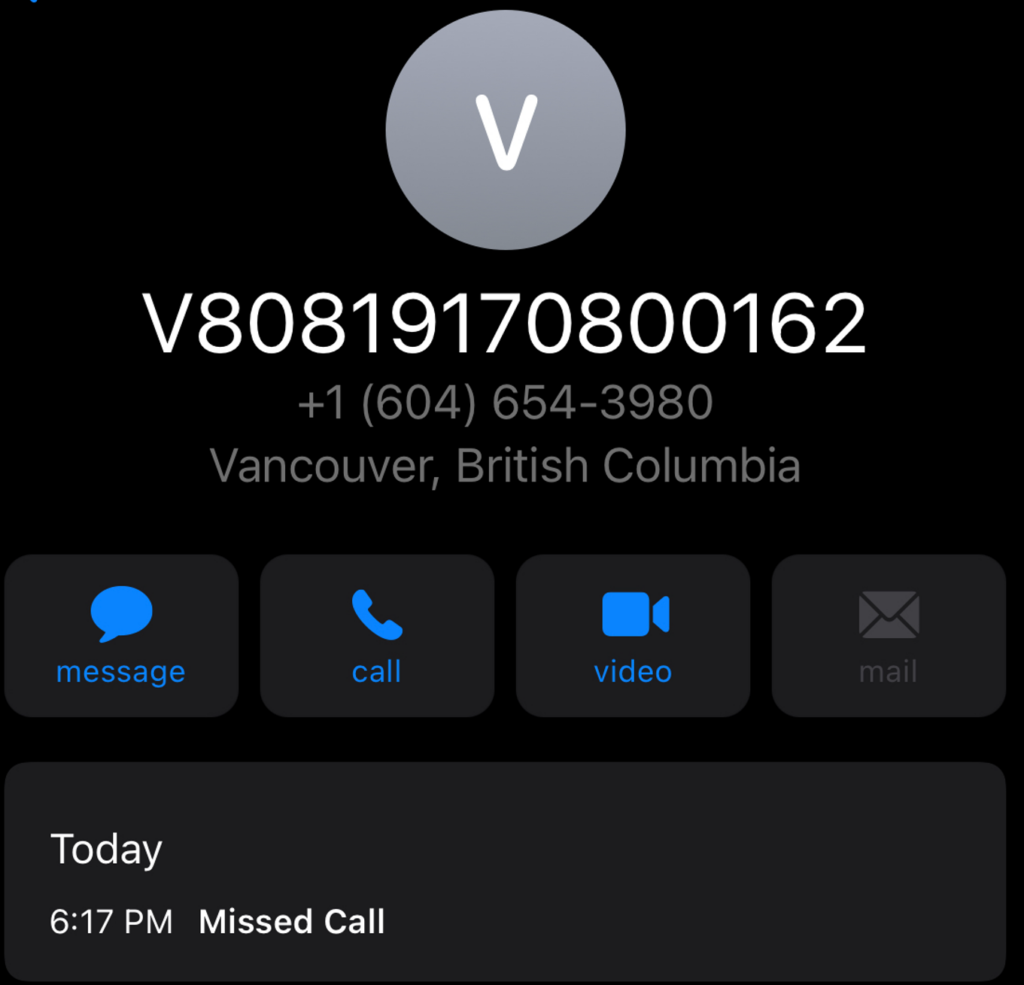
Spoofed Caller ID & Why These Calls Happen
A little diversion from my usual Azure articles – I want to highlight a real problem around these marketing spam calls with fake caller ID. So with that, let’s dive right in and take a look at some of the risks, what we can do to help stop these calls, and how to report them to both your phone provider and the CRTC here in Canada (sorry to my world-wide friends & followers).
These calls are always against the rules in Canada and done by a person or company that is purposely blocking their numbers of origin to hide it or to get you to answer the call. Think about the very popular scam where a fake person from “Microsoft” calls you to tell you about a virus on your computer — this just is not true and it is always a scam. Nobody knows about your home computer or what you’re doing on it other than you. These unscrupulous folks are the reason these calls happen.
Let’s talk about when we get a call that shows a bit like this:

First, notice that the actual phone number is correct in appearance, but the name is a Vxxxxxx number. This is actually a virtual switched number with a fake caller ID. On top of that the number of origin is also faked. This happens to a lot of people and it can be frustrating because you block and block the number but they just keep calling.
Never, never, not ever do you answer these calls. This tells the automated calling software at the origin that a human owns this number and to put that number into rotation for marketing calls.
Now, the case of how to handle this right?
Ok, so there is no perfect response here other than to simply block the number and report it to your carrier. As a subscriber of @@@@ Phone company here in Canada, I can tell you that the way our phone companies fail to block these is just plain frustrating. Further, if we don’t tell them, they need to fix it – how will they know?

Let’s talk about how to report these numbers.
First, check out the CRTC’s great article on how to respond to these numbers https://crtc.gc.ca/eng/phone/telemarketing/identit.htm then do something about it:
- Block the number on your phone or cell phone. This is the best way to make the noise stop.
- Ensure your number is listed on the Do Not Call Marketing list here: https://www.lnnte-dncl.gc.ca/en/Consumer/Register/#!/
- Phone your telephone provider and register a complaint noting the timestamp of that inbound call to your number. This will help company @@@@@ to actually block those calls before they hit your phone. Now, if you check out the CRTC first link that I’ve referenced you’ll note that these calls should never make it through in the first place. This is a game of cat & mouse that the good guys and bad guys play — just like spam or phishing emails that sneak through the filters. It’s the same battle.
- Register a complaint here https://www.lnnte-dncl.gc.ca/en/Consumer/Complaint/#!/ that the marketing call you received was a violation if you are listed on the DNC or do not call list.
- Ask your phone provider at @@@@@ to block unwanted calls for you. Sometimes a provider can block unknown calls or put other calling filters in place to help you out. This is usually a rare thing, but if you get a lot of calls every day with these numbers you have to work with your provider to resolve this because it is their network and they control the phone switches and security on them.
Remember that there are ways to help providers stop these calls and the poor person you reach in Customer Service likely isn’t the one who called you; so try to take a breath and be pleasant. They likely genuinely want to help you resolve this. Now, that I’ve got all that aired-out; let’s get back to anything more Azure related and fun!